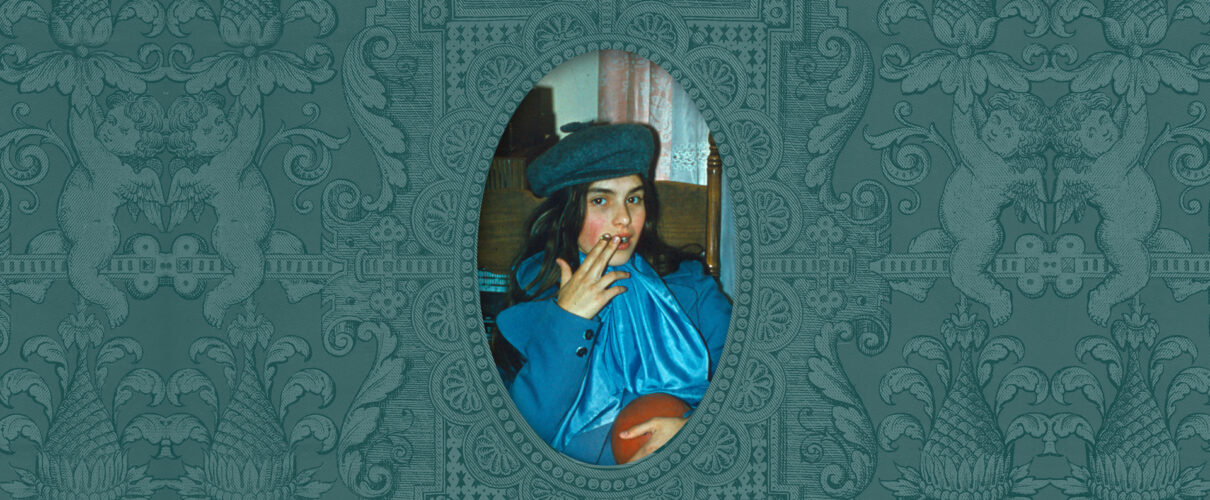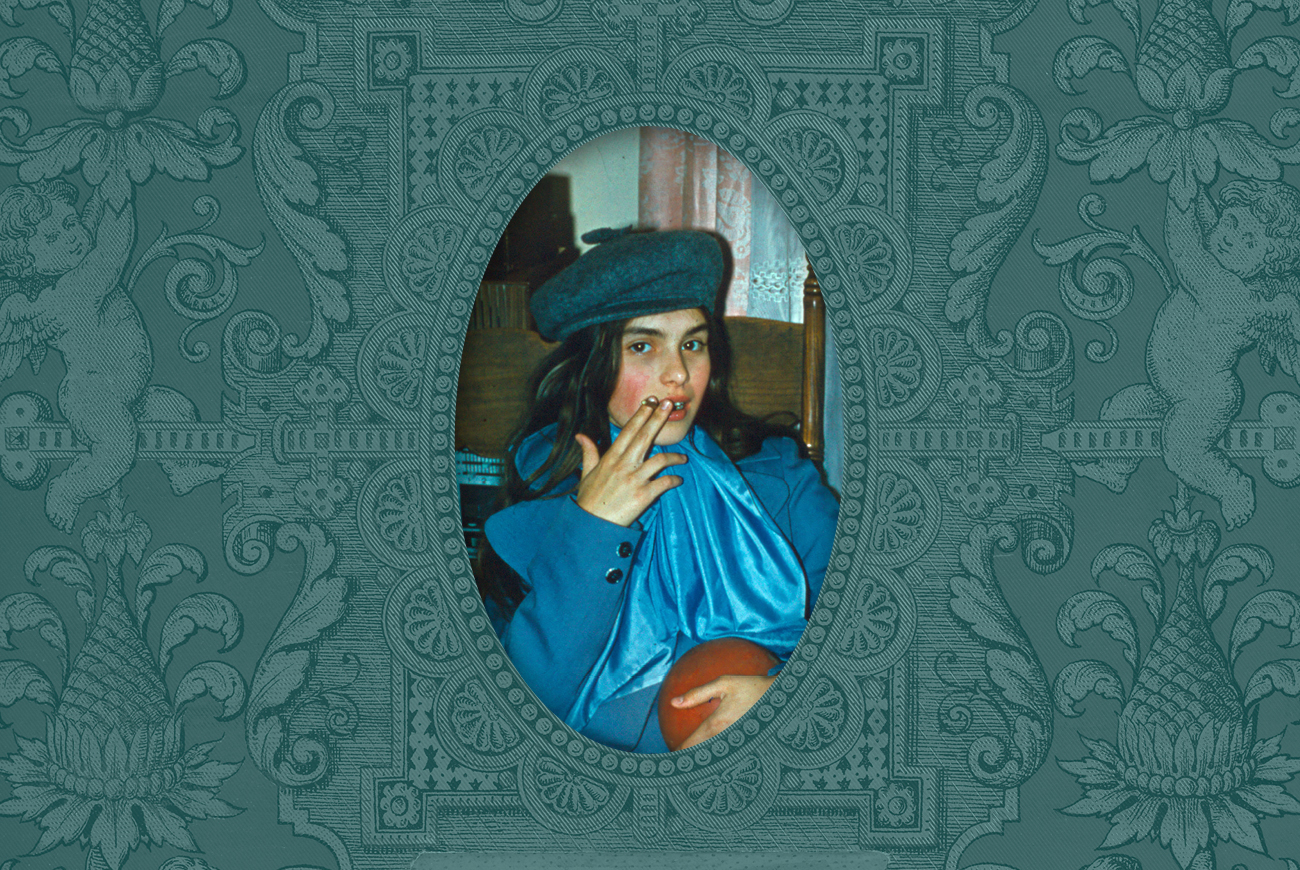EXHIBITIONS

29 February – 26 May 2024 Tue, Wed, Fri, Sat 11-19, Thu 11-20, Sun 11-18
20PLN regular / 15PLN concessions, free admission on Thursdays
Lovely Is the Youth of Our Age. Photo Albums 1850-1950

Guided tour with Izabela Pluta and the curatorial team: April 7 (Sunday), 4:00 p.m.
100 years of stories and emotions in the photo albums.
A new exhibition titled Lovely Is the Youth of Our Age. Photo Albums 1850-1950, dedicated fully to photographic albums. It will offer a unique opportunity to view over a hundred of rarely exhibited items from one of the largest collections of Warsaw photography. Photo albums from the 19th and 20th centuries will be accompanied by artworks by contemporary artists. The exhibition is part of the program run by Centre for Photography, the Museum of Warsaw’s new initiative aiming at developing an interest in photography.
More than a photography book
Exhibition will demonstrate how photo albums transform, how the conventions that govern them are established and how they fade away, and finally how they are intertwined with the history of photography. It will show the roles that albums played in communities, families, or institutions. The exhibition will also focus on the emotions that browsing an album once evoked and still provokes. An album is an everyday object, still present in our homes.
In the exhibition, we will display albums documenting family events as well as those commemorating events in the lives of school communities or professional groups.
The experience of viewing photo albums almost always requires the stirring of imagination, especially at a museum, where they cannot be touched and leafed through. It allows us to see what these unique objects conceal. The aim of the exhibition is to show that photographic albums are a natural environment for photography.
Evoking and capturing memories
A photographic album can serve many functions. In the 19th century, it was, among others, an elegant gift, a tool for building social position and reasserting one’s national identity, or an inspiration for conversation during social gatherings. With the popularization of photography, the popularity of capturing memories and building personal stories in the form of albums increased as well. Albums can stir emotions, tighten bonds, and captivate imagination. The exposition will also feature objects completely devoid of sentiment, used for scientific or criminal documentation.
Each album carries a story
The importance of private stories is implied by the quote from the exhibition’s title. The words “lovely is the youth of our age” come from a handwritten inscription on a page of an album given to a girl named Franka on her name day in 1943.
Photographic albums often have more than one author or creator. The exhibition highlights how important not only the photographer is, but also the person who compiles an album, the person who owns it or who donates it. Without them, the story of the albums is incomplete. Engineer Stefan Stattler’s album may serve as an example here. The photographs he pasted in tell a proud story of the development of one of the largest enterprises in the Kingdom of Poland. After 40 years of work, Stefan Stattler resigned—amid misunderstandings—from the post of director of the Lilpop, Rau, and Loewenstein Industrial Company. Disillusioned, he pasted a photo of a horse on the last page of the album, next to his portraits and, in a bitter comment, compared his fate to that of a draught animal.
Not just photographs
The photo albums presented in the exhibition combine various means of expression. We can find drawings, calligraphed dedications, collages, and private notes on their pages. Typically, photo albums are treated as a place to store photos. For the sake of exhibitions, photos are either removed from the album, or the album is displayed open only on selected pages. We rarely pay attention to the layout of photos on a page. Elements such as clippings from newspapers, drawings, or memorabilia that are pasted or inserted into the album are often overlooked. A variety of materials are used to create an album, from covers, e.g., decorated with velvet, wood, or silver, to flowers inserted between the pages. Proper and safe displaying of such complex objects poses a challenge—it was made possible thanks to the lengthy preparations of conservation officers.
100-year history of photo albums
The Museum of Warsaw holds a unique collection of Polish photo albums. The oldest date back to the beginnings of photography in Warsaw. The exhibition will feature, among others, the first photo album of Warsaw views by Karol Beyer from 1859, as well as an album with the famous photographic documentation of the construction of the Kierbedz Bridge. Photographs by authors such as Zofia Chomętowska or Sylwester Braun will be displayed in unconventional contexts—albums dedicated to specific individuals on various occasions. There will be no shortage of albums from which one can read the stories of Warsaw families, as well as those of former girls’ schools or even the cycling community. Some of the items will be shown to the public for the first time.
Photo albums and contemporary art
Contemporary artists accompanying the historical objects in the exhibition view the photographic album as a medium of expression. For Aneta Grzeszykowska, private photographs are a point of departure. In her 2022 Album, the artist “erased” the image of her daughter, arranging her life story in reverse, from her 10th birthday to her arrival into the world. This work will be available for individual browsing. In another room, visitors will see the works of Igor Omulecki, who arranged family photographs from a period of over twenty years into a nostalgic slide show. Meanwhile, Izabela Pluta’s works focus on the materiality of a 19th-century album—its decorations and shapes—and also question whether an album is a carrier of memory of the past. Visitors will have an opportunity to explore how photographic albums can serve different functions through viewing small notebooks filled with Polaroids created by Rafał Milach, who uses them as handy sketchbooks.
- Widok wystawy „Śliczna jest młodość naszego wieku. Fotoalbumy 1850–1950”, fot. T. Kaczor
- Widok wystawy „Śliczna jest młodość naszego wieku. Fotoalbumy 1850–1950”, fot. T. Kaczor
- Widok wystawy „Śliczna jest młodość naszego wieku. Fotoalbumy 1850–1950”, fot. T. Kaczor
- Widok wystawy „Śliczna jest młodość naszego wieku. Fotoalbumy 1850–1950”, fot. T. Kaczor
- Widok wystawy „Śliczna jest młodość naszego wieku. Fotoalbumy 1850–1950”, fot. T. Kaczor
- Widok wystawy „Śliczna jest młodość naszego wieku. Fotoalbumy 1850–1950”, fot. T. Kaczor
TOURING WITH A CHILD
Cards with tasks are available at the exhibition for children aged 8-12 and youngsters.
After purchasing tickets, at the exhibition, all you need to do is to get a card with tasks from the exhibition supervisor to solve puzzles together during the tour, and above all, have fun.
Cards are available in 2 language versions: in Polish and English.
Photography Centre at the Museum of Warsaw
Lovely Is the Youth of Our Age. Photo Albums 1850-1950 is the first exhibition realised by the Photography Centre, the Museum of Warsaw’s new initiative whose goal is to develop an interest in photography.
As part of the Focus on Photography project, the Photography Centre is supported by funding from Iceland, Liechtenstein and Norway, from the EEA and Norwegian Grants and from the Ministry of Culture and National Heritage.

Curatorial team: Katarzyna Adamska, Piotr Głogowski, Monika Michałowicz, Ewa Nowak-Mitura, Karolina Puchała-Rojek, Julia Staniszewska, Anna Topolska
Exhibition designer: Maciej Siuda, Aleksandra Jankowska-Głowacka
Producer: Katarzyna Jolanta Górska
Graphic design & DTP: Joanna Bębenek, Łukasz Izert, Filip i Urszula Tofil (Syfon Studio)
Poster design and promotional materials: Joanna Bębenek
Text editing: Julia Odnous
Proofreading: Urszula Drabińska
Translation: Marcin Wawrzyńczak (teksty ciągłe / exhibition text), Katarzyna Bojarska (chmura haseł / tag cloud)
Framing and implementation: Paweł Grochowalski, Ksenia Góreczna, Krzysztof Hernik, Julia Kłosińska, Piotr Lipiński, Artur Miniewicz, Katarzyna Radecka, Tomasz Raubo, Adam Rogowski, Anna Rutkowska, Dariusz Sałański, Leszek Sokołowski, Mariusz Stawski, Hanna Suchołbiak, Adam Wrzosek
Multimedia: Filip Wielechowski-Olszak, Dorota Migas-Mazur
Conservation: Julia Kłosińska, Piotr Popławski, współpraca Igor Nowak, Adam Wrzosek
Digitisation coordinator: Mikołaj Kalina
Digitisation: Adrian Czechowski, Eliza Kowalska-Małek, Kamil Łuczak, Michał Matyjaszewski, Anna Sulej
External loans: Janusz Kurczak
In-house loans: Dorota Parszewska, Zuzanna Sieroszewska-Rolewicz, Filip Żelewski, Tomasz Lewandowski, Grażyna Deneka, Joanna Rykiel
Scenography production: Artmontage, Ekspos
External Funds Acquisition Team: Marzena Michałek-Dąbrowska
Legal services: Maciej Barabasz, Monika Góra, Tomasz Saganowski
Accompanying program: Wanda Kaczor, Anna Lorek-Maciejuk
Communications of the Photography Centre: Kacper Szalecki
Communications and marketing: Joanna Andruszko, Joanna Bębenek, Małgorzata Czajkowska, Agata Fijałkowska, Agata Fronczyk, Klaudia Gniady, Dagmara Jędrzejewska, Daniel Karwowski, Anna Ładna, Jowita Purzycka, Kacper Szalecki
Media patrons: „Polityka”, Radio Tok FM, „Pismo”, Magazyn „Szum”
Key visual: Joanna Bębenek; in the background, fragment of a decorated page from the Renaissance album from the turn of the 20th century, the Museum of Warsaw collection, and a photo from Igor Omulecki’s family collection titled A Common Matter: 1968-1983, courtesy of the artist










